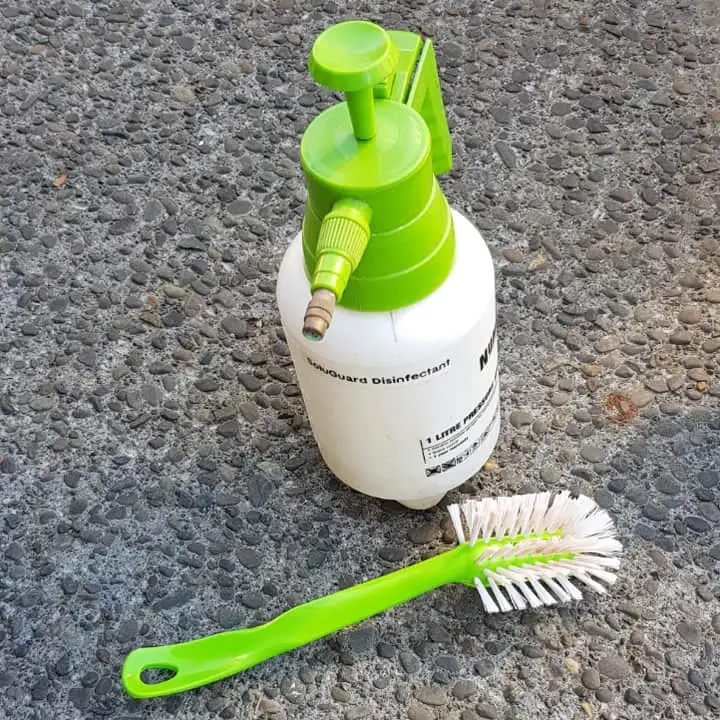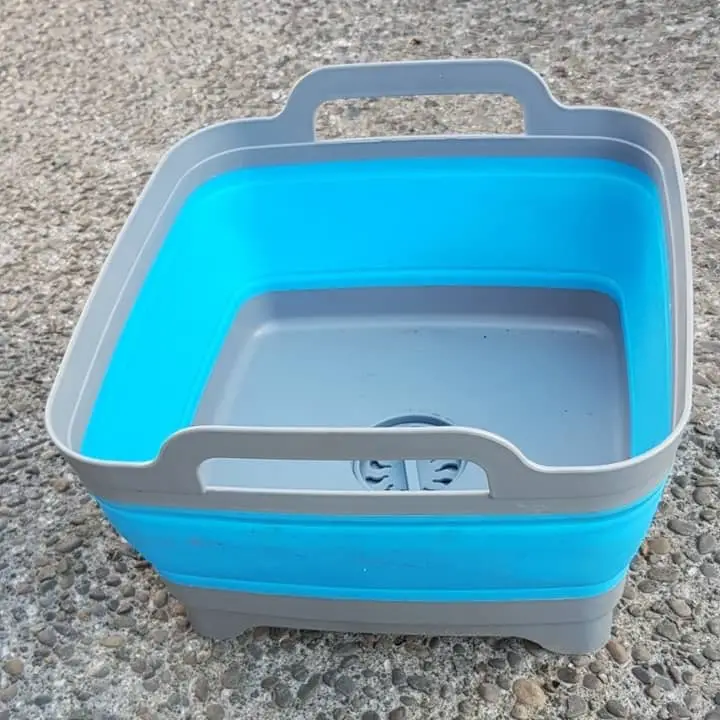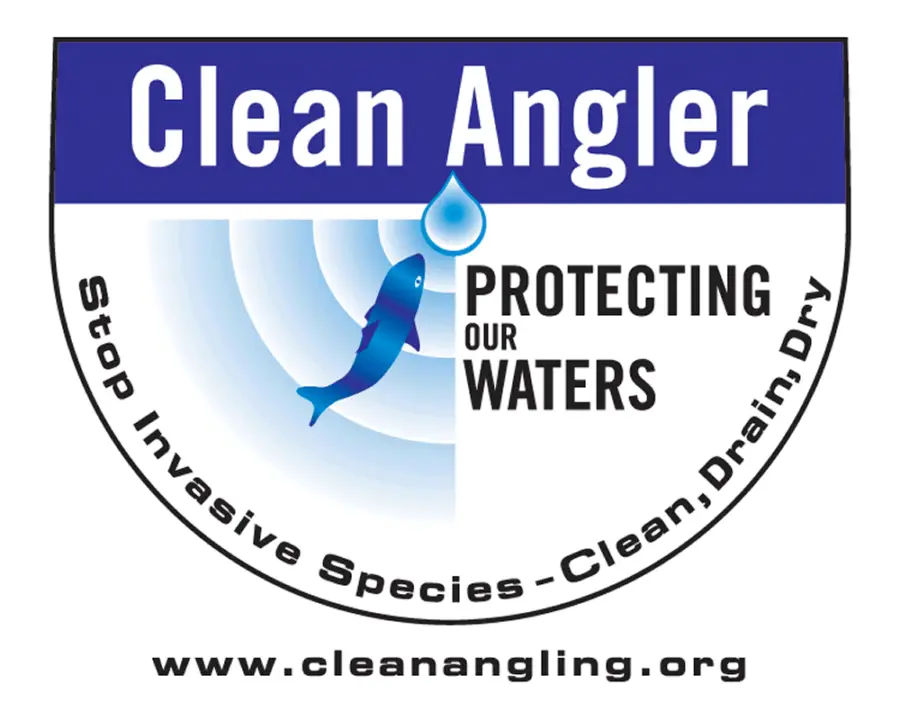Wading boots cleaned regularly last longer, but more importantly, prevent the spread of invasive species from one trout stream, river or lake to another body of water.
Here’s an easy 7-step thorough guide to cleaning your wading boots.
Step 1- Check
Immediately you are off the water while you are still on the riverbank, remove your boots and check for any weed or plant material on your boots.
Look closely by removing the inner soles and checking around the laces and soles.
Leave that material taken off the boots at the site or place it in the rubbish.
Don’t wash plant material down any drain.
Step 2 – Rinse and remove dirt
Rinse the boots while using a small brush to remove dirt and other material sticking to the soles of the boots.
Step 3 – Wash
Place the boots in a container like a collapsible bucket or plastic bag.
The following washing process is essential for removing any remaining dirt and pests from your boots.
Soak in a bucket of water containing either a 10% mixture of household detergent, nappy cleaner – or a 2% mixture of bleach for 10 minutes.
OR
Soak the boots inside and out using a spray bottle containing the same soapy water mixture – 10% household detergent, nappy cleaner or 2% bleach.
After either method leave the wading boots to soak for 10 minutes. (Ensure the mixture has penetrated through the boots entirely before leaving to soak.)
Read about the new science for soaking 10 minutes here.
Tip the cleaning water out well away from waterways. Don’t forget to tip your boots upside down.
Use a biodegradable detergent that is safe for your boots too.
You can buy fancy boot cleaner, but these are no better than the detergent you use to clean your dishes or household bleach.
Step 4 – Rinse
Give your wading boots a thorough rinse with clean water.
Step 5 – Air-dry
Air-dry in a warm, airy location until dry to the touch – both inside and out – away from extreme heat.
Modern technical fabrics are used to manufacture wading boots, so they dry quickly. But you might need some patience if you don’t have a warm, dry location like a sunny windowsill to do this.
Don’t put your wading boots into a clothes dryer, on the woodstove, or in the direct heat of an open fire.
Excessive heat will damage the fabric and affect the glues that hold the boot together.
Step 6 – Dry for 48 hours more
To prevent the spread of invasive aquatic pests, dry for another 48 hours before entering a new waterway, particularly where there is a risk of transferring invasive species.
This step is vital for reducing the risk of taking pests from one location to another, as some algae and water-borne creatures can stay alive in wet boots for long periods, months even.
Step 7 – Store
Store your wading boots in a suitable well-aired container or carry bag away from excessive heat.


Extend the life of your wading boots and protect the trout streams
Aquatic invasive species exist everywhere. Examples include algae such as didymo (rock snot) or animals including zebra mussels or New Zealand mud snails.
Washing and drying your wading boots will prevent the accidental movement of aquatic pests, as well as extend the life of your wading gear and other fishing equipment.
These simple steps are also an excellent way to stop foul odors and bacterial growth in your new boots.
You can also extend the life of the breathable fabrics in your waders with proper care.
Hand wash your breathable waders in warm soapy water. This is the best method to maintain the breathability of the fabric and preserve the waterproof coating. (Don’t use fabric softeners.)
The same method applies to extend the life of your neoprene waders.
Can you machine wash your neoprene wading socks? The answer is here.
Can I clean my wading boots by freezing?
Yes, freezing your wading boots until solid will destroy most pests as so is a good alternative to washing and drying.
I haven’t tried this, but I don’t fancy putting my feet in freezing boots. Also, my home freezer isn’t big enough for this, and neither is the tiny freezer box in my truck camper.
Why it’s essential to clean your wading boots
All around the world, there are invasive species of plants and animals that have a detrimental effect on the waterways.
Introducing unwelcome species destroys native populations and creates environments that make freshwater fishing difficult and waterways unattractive.
Check with your local authorities for guidance on cleaning your fly fishing gear to prevent the invasion of unwelcome species in our river systems and local streams.
Felt soles are forbidden in New Zealand and some US states, replaced with rubber-soled boots. (Again, check the local regulations.)
Do I need two sets of wading boots?
If you are regularly moving from one waterway to another, a great option is to have a second set of wading boots. This will avoid you having to clean your boots between every water body.
This way, you can leave one set to dry for 48 hours while using the other pair.
Or keep one set for certain rivers and the other for locations.
Fun fact Having two sets of boots is expensive. Instead, I have water sandals for wet wading during the summer. These sandals aren't the greatest for wading comfort but came in handy during a fly fishing roadtrip of the South Island of New Zealand, where didymo is a big problem.
What you need to know about bringing your fishing gear to New Zealand for Fly Fishing
Be warned! New Zealand has some of the most strict biosecurity regulations globally.
Protecting the New Zealand environment against imported pests is taken very seriously.
When you enter New Zealand, you’ll need to declare all salt and freshwater products and equipment. This includes:
- seashells
- any fish and shellfish
- seaweed, algae, aquarium plants, and seeds
- micro-organisms
- diving, swimming, and fishing equipment, including non-artificial material for fly-tying.
All the fishing equipment and outdoor gear you bring must be clean and dry.
If the biosecurity inspectors are the border are not satisfied, then your fishing gear will be cleaned for you, perhaps at your expense and inconvenience.
The latest science behind the guidelines for cleaning wading boots
In 2021 a new scientific study was undertaken to test the effectiveness of the advice given to freshwater anglers in New Zealand.
As a result, the new practice of soaking for 10 minutes was recommended.
This 10-minute rule applies when using a 10% household detergent, nappy cleaner, or 2% bleach solution.
This study showed that soaking for 10 minutes was necessary to kill didymo and another invasive species Lindavia.
(Lindavia forms slime accumulations in lakes that block water intakes and interfere with recreation.)
Be a responsible freshwater angler – Protect your environment.
These aquatic hitchhikers travel by stealth.
Sometimes a stream is infected, but the pest isn’t visible.
These pests start as microscopic spores.
Get into good habits.

Take the Clean Angling Pledge.
